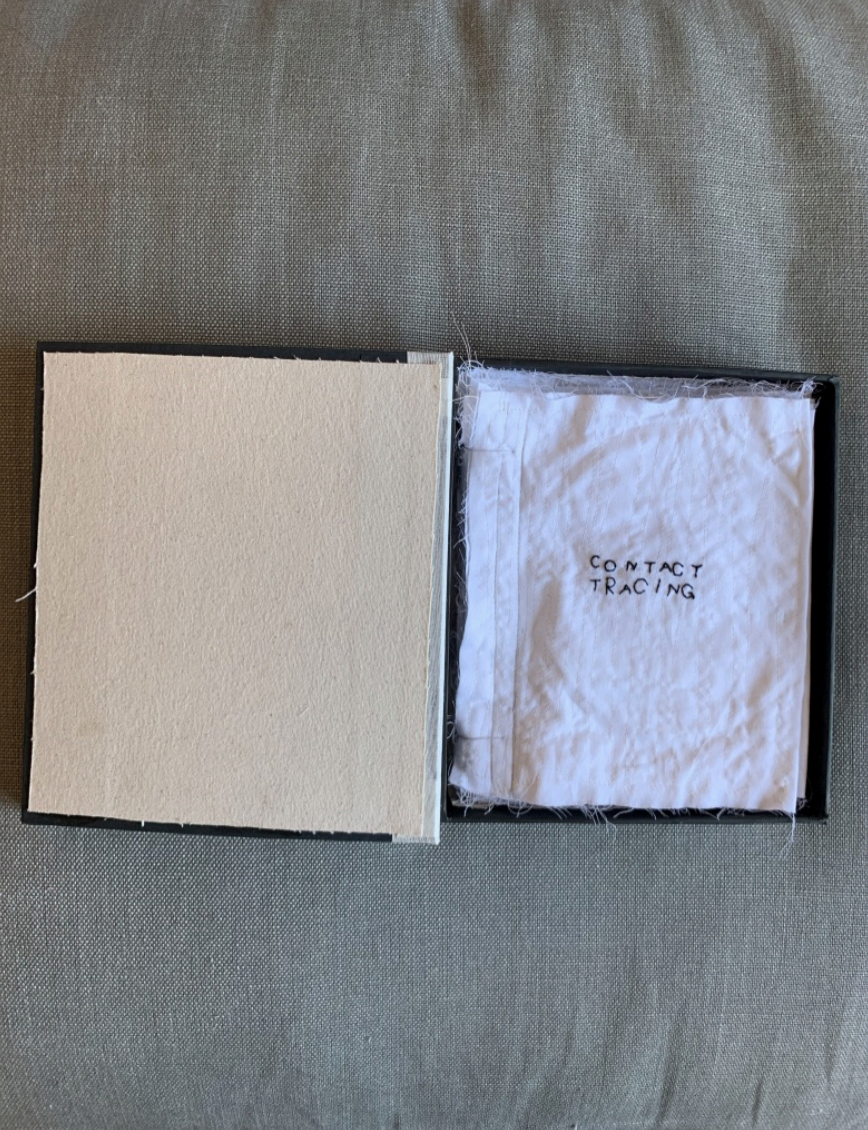By Bianca Trinidad, Class of 2021, BS in marketing and minor in journalism
Press. Stroke. Skim. These are the first three words embroidered onto the gentle cloth pages of Corcoran fine arts and art history senior, Julia Matsumoto’s book, Contact Tracing, which has been acquired by GW Libraries.
 Nearly a year ago, everyone was forced back into their homes, all while experiencing the chaos of the pandemic unfold. As a result, many people found refuge in occupying themselves with activities from cooking to painting to taking aimlessly long walks in the streets.
Nearly a year ago, everyone was forced back into their homes, all while experiencing the chaos of the pandemic unfold. As a result, many people found refuge in occupying themselves with activities from cooking to painting to taking aimlessly long walks in the streets.
Matsumoto did the same.
“When we were sent home in March 2020, I went back home to New York City to live with my family,” explained Matsumoto. “Like everyone else, I was looking for projects to fill up my time. So, I made Contact Tracing, a fabric book.”
During the months of March and April of last year, New York City was experiencing its peak months of the Covid-19 spread, and so, Matsumoto was very limited to a few activities.
“All I could really do was go on walks, and I was noticing the trash had kind of changed from plastic bottles to gloves,” described Matsumoto. “So, I started photographing all the gloves from the street… turned those photos into contour line drawings and then sewed them using a sewing machine.”
At the time, Matsumoto was taking a class with Professor Kerry McAleer-Keeler, who teaches printmaking and bookmaking at the Corcoran.
“That was where the book idea stemmed from,” said Matsumoto.
With Contact Tracing, Matsumoto captured the various ways of touch - a human sense that was stripped away from people during the pandemic. The book itself contains pages where on one side is an embroidered word relating to touch, while the other contains an embroidered tracing of the gloves she photographed.
When considering what materials to use, Matsumoto was mostly guided by the fact that she could not go out and get materials.
“So, I was really thinking about what I had at home and what I had an excess of,” explained Matsumoto. “And well, we had excess bedsheets.”
Matsumoto had in mind the concepts of a glove and how it prevents people from feeling, while also considering how bedsheets are soft and exude comfort, which the virus did the exact opposite of.
“I kind of like having these opposing ideas,” shared Matsumoto. “[With gloves] you’re kind of forced to be distant from touch, whereas a fabric book is very tactile and is all about how the pages feel.”
Through this concept, she wanted to embody the state of how people moved away from being with loved ones, and she wanted the book to release a feeling of comfort from the distance people were experiencing.
However, as the one-year mark approaches, times have evolved, and many people are not really wearing gloves anymore, according to Matsumoto.
“That kind of initial fear and displacement of people have settled down - or at least, people kind of got used to it,” explained Matsumoto. “This was a very time-sensitive project, and I don’t think I would make this now… although, it still holds an infinite importance to me.”
Matsumoto’s initial intention was to have people touch and feel the book as they slowly flip through its tender fabric pages.
“[Contact Tracing] calls you to pay attention and just slow down, which is important to me. You can’t just flip through the pages,” said Matsumoto.
With the pandemic still occurring, people have not yet been able to access the book.
But “the time will come when people can look through the book,” expressed Matsumoto. “And when they do, I just hope that they will take a moment and just slow down for a [second].”
To check out more of Julia Matsumoto's work, click here.


